
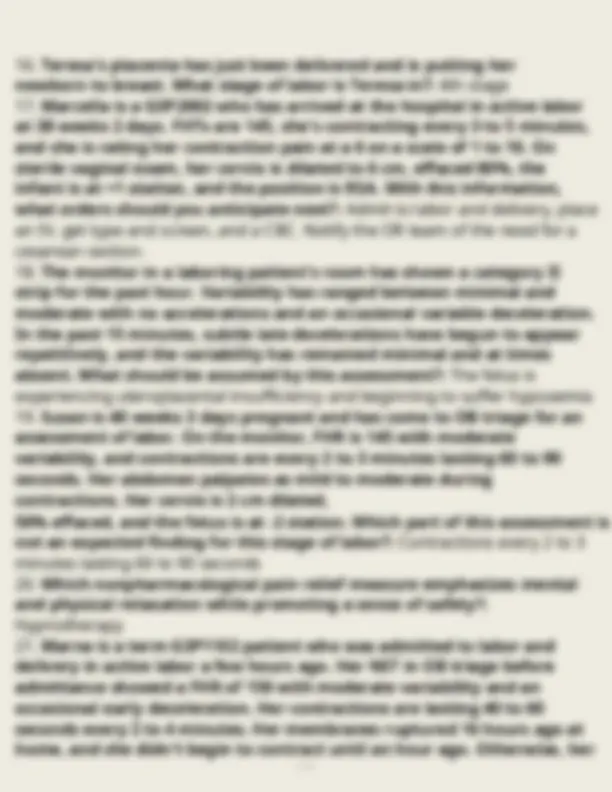
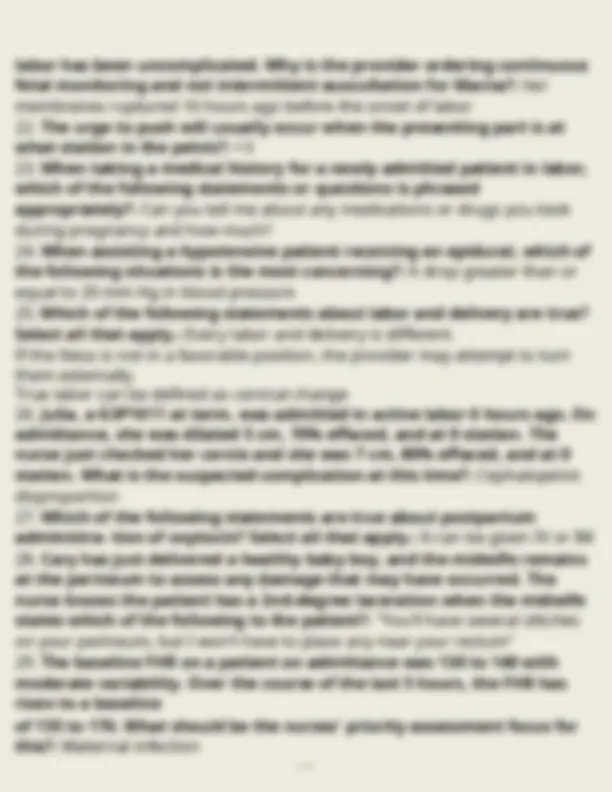
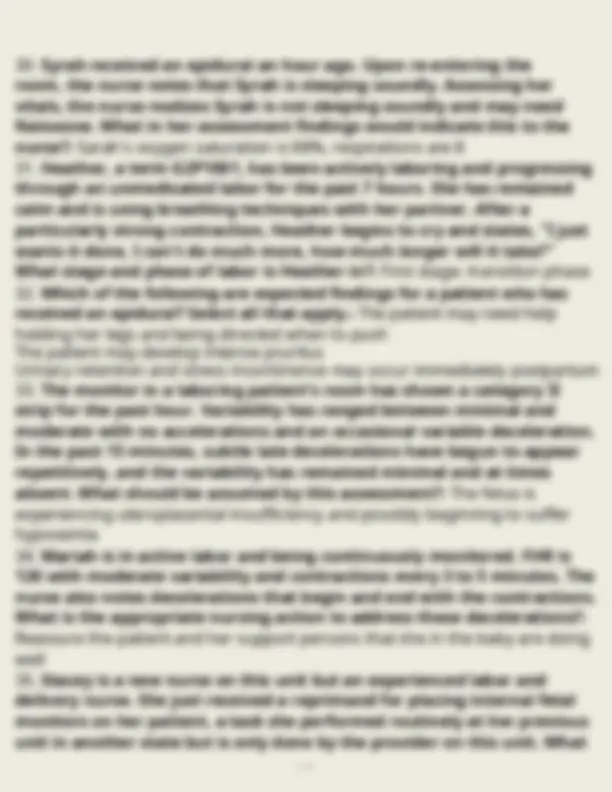
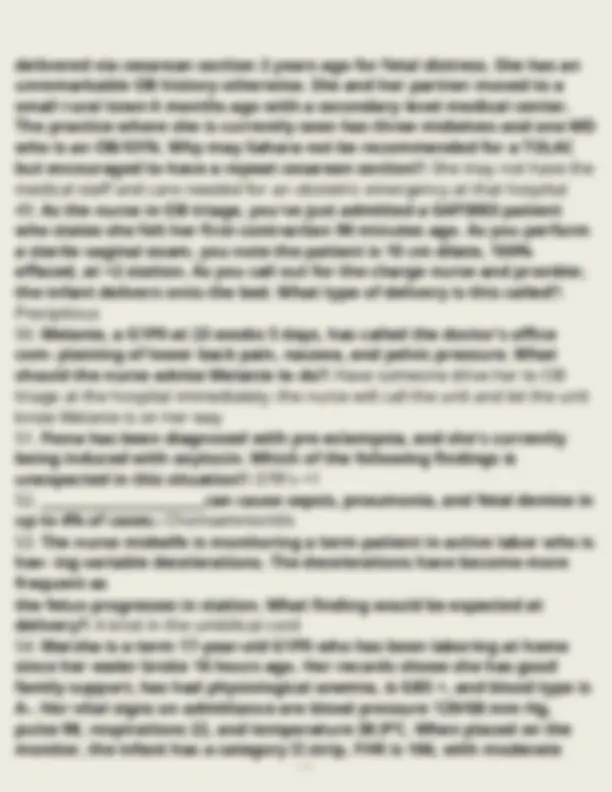
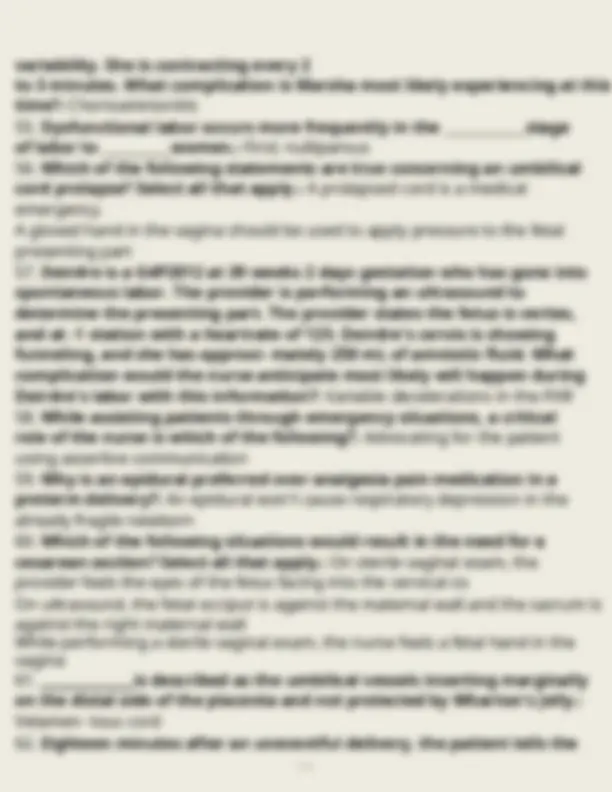
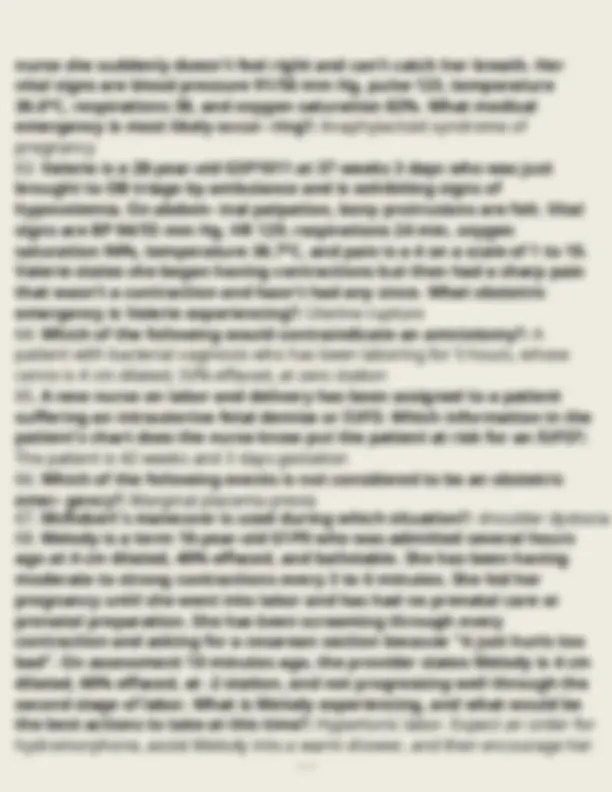
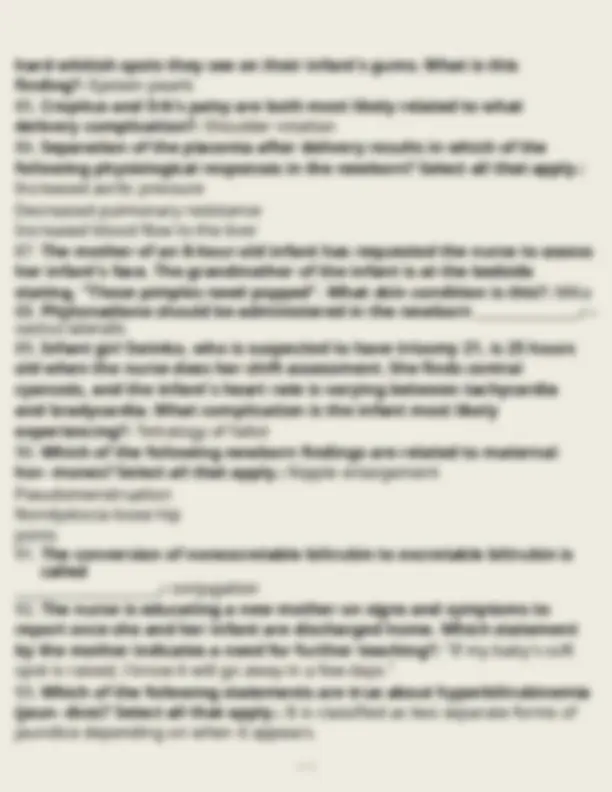
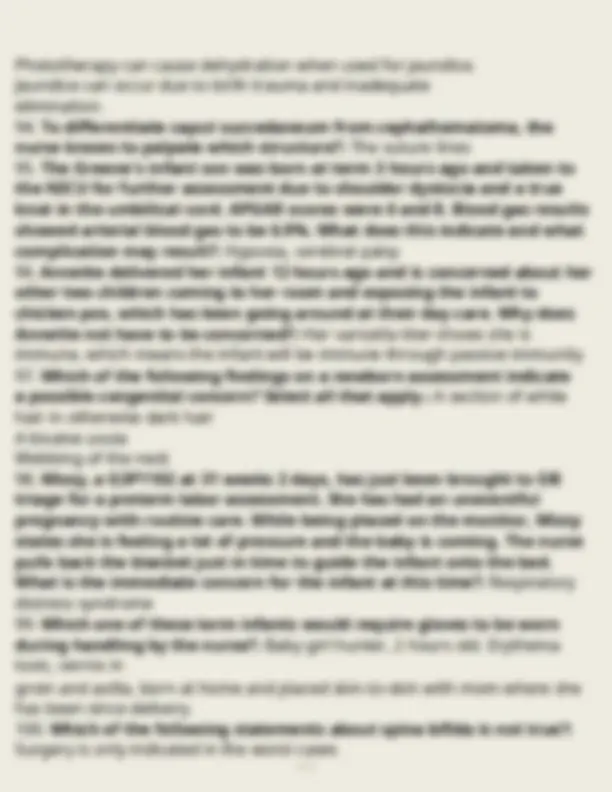
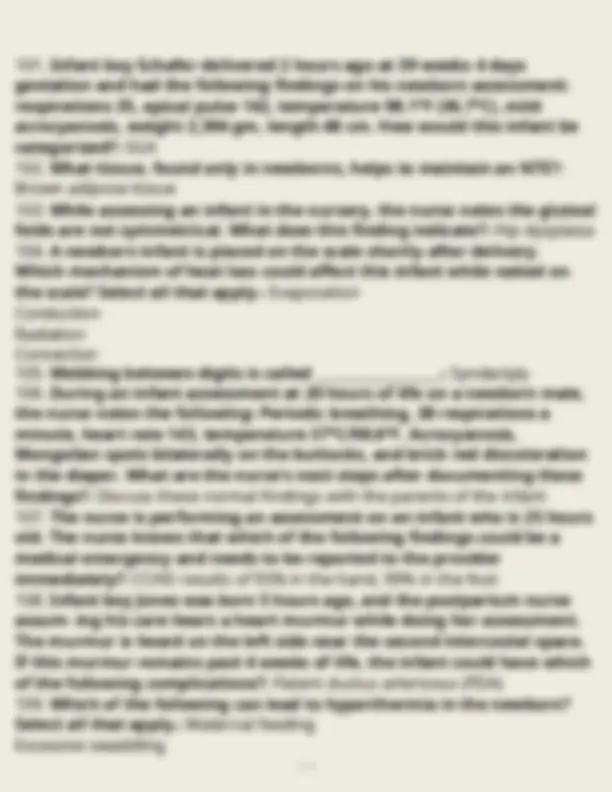


Study with the several resources on Docsity

Earn points by helping other students or get them with a premium plan


Prepare for your exams
Study with the several resources on Docsity

Earn points to download
Earn points by helping other students or get them with a premium plan
Community
Ask the community for help and clear up your study doubts
Discover the best universities in your country according to Docsity users
Free resources
Download our free guides on studying techniques, anxiety management strategies, and thesis advice from Docsity tutors
F.A Davis Exam 2 (CH 7,8,9) actual practice test detailed accurate solutions/revised
Typology: Exams
1 / 16

This page cannot be seen from the preview
Don't miss anything!










pelvic floor and cervix Levator ani muscles under the pubic symphysis
labor has been uncomplicated. Why is the provider ordering continuous fetal monitoring and not intermittent auscultation for Marna?: her membranes ruptured 16 hours ago before the onset of labor
something happens"
delivered via cesarean section 2 years ago for fetal distress. She has an unremarkable OB history otherwise. She and her partner moved to a small rural town 6 months ago with a secondary level medical center. The practice where she is currently seen has three midwives and one MD who is an OB/GYN. Why may Sahara not be recommended for a TOLAC but encouraged to have a repeat cesarean section?: She may not have the medical staff and care needed for an obstetric emergency at that hospital
nurse she suddenly doesn't feel right and can't catch her breath. Her vital signs are blood pressure 91/56 mm Hg, pulse 123, temperature 36.6°C, respirations 38, and oxygen saturation 82%. What medical emergency is most likely occur- ring?: Anaphylactoid syndrome of pregnancy
to rest.
hard whitish spots they see on their infant's gums. What is this finding?: Epstein pearls
Phototherapy can cause dehydration when used for jaundice. Jaundice can occur due to birth trauma and inadequate elimination.
Dehydration